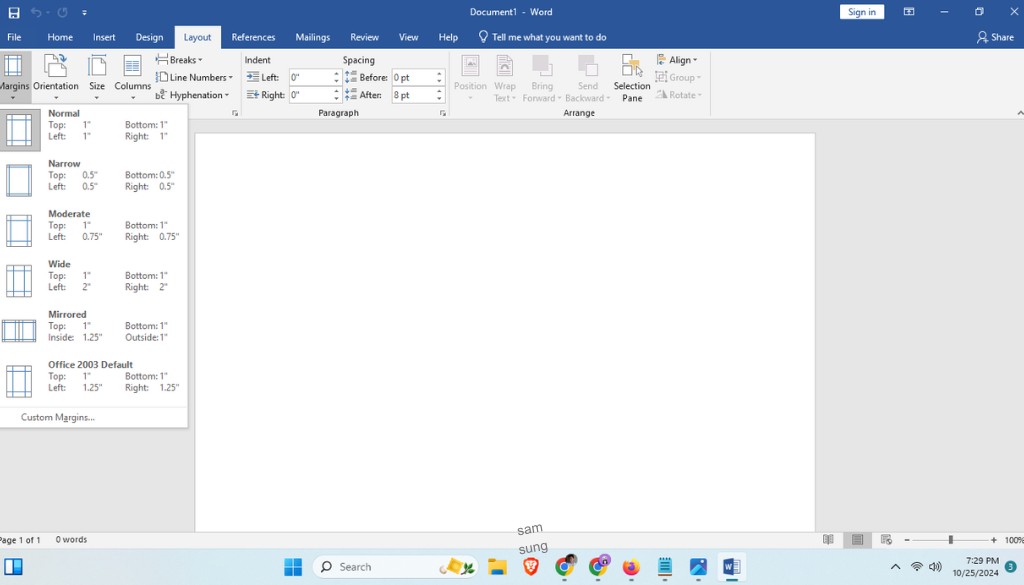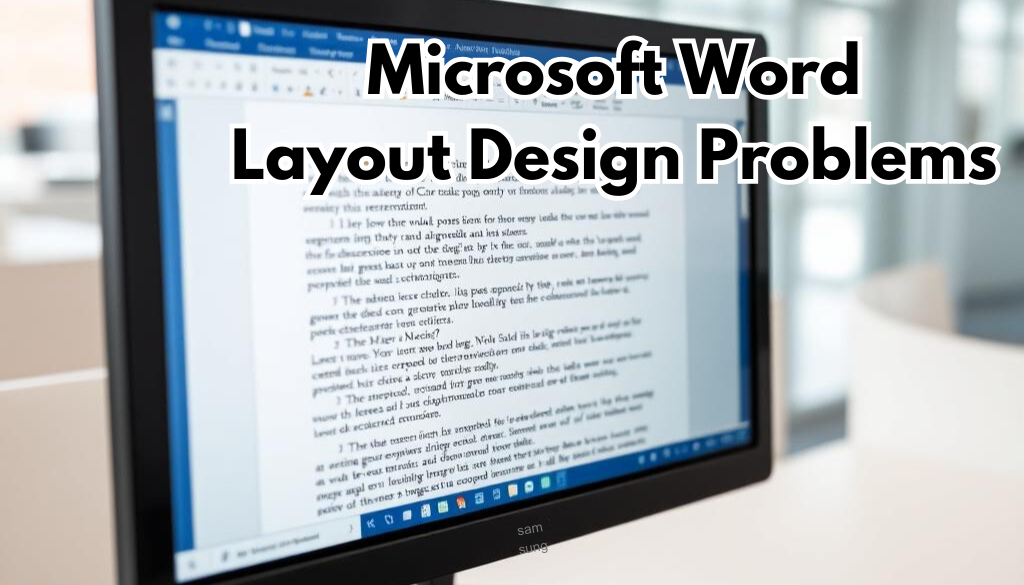Struggling with Fixing document layout problems in MS Word can be really frustrating, especially when it feels like your document is acting on its own. Luckily, fixing these problems doesn’t have to be too hard. This article will show you the most common layout problems and exactly how to solve them in a few easy steps. Say goodbye to stress, and hello to well-formatted documents!
Understanding Layout Problems in MS Word
Before we jump into solutions, it’s helpful to understand some of the common layout problems you might face in MS Word:
- Inconsistent Page Margins
- Text Overflowing into Margins
- Unexpected Page Breaks
- Tables Not Aligning Properly
- Images Moving Around Unpredictably
These issues can be caused by many things, like incorrect settings or formatting quirks, but the good news is that most of them are easy to fix!
Step-by-Step Solutions to Fix MS Word Layout Problems

1. Fixing Inconsistent Margins
If your page margins are not the same throughout the document, here are a few simple ways to fix them:
- Check Margin Settings: Go to the “Layout” tab, then select “Margins.” From there, you can apply the same margins throughout the document by choosing a preset or customizing your own.
- Use Section Breaks Wisely: Sometimes margin problems come from section breaks. Make sure you delete any unnecessary section breaks by selecting the break and pressing the “Delete” key.
2. Correcting Text Overflow into Margins
If text is overflowing into the margins, it’s usually caused by alignment problems or paragraph settings.
- Adjust Text Alignment: Highlight the text that’s causing problems, right-click, and choose “Paragraph.” Make sure your alignment is set to “Left” or “Justify” for better control.
- Check Indents: Sometimes indents can push text into the margins. Go to the “Paragraph” settings and make sure the indents are set to “0 cm.”
3. Handling Unexpected Page Breaks
Page breaks that show up in the wrong places can be really annoying, but they are easy to fix.
- Remove Manual Breaks: Click “Show/Hide” (¶ symbol) under the “Home” tab to see hidden formatting marks like manual page breaks. Click on the break and press “Delete.”
- Avoid Widows and Orphans: Enable widow and orphan control by going to “Paragraph” settings. This helps prevent single lines from starting or ending a page, which can cause awkward breaks.
4. Aligning Tables Properly
Tables in MS Word can be tricky. If your tables won’t align properly, try these steps:
- Use Table Properties: Right-click on the table, select “Table Properties,” and adjust the alignment settings. You can align it to the left, center, or right to get the look you want.
- Turn Off Text Wrapping: Make sure text wrapping for your table is set to “None” in the “Table Properties” to prevent the table from moving around unexpectedly.
5. Taming Unruly Images
Images can be hard to manage when they jump around or overlap text.
- Anchor Images: Click on the image, and select the anchor icon to lock it to a specific paragraph. This keeps the image in place even if other content changes.
- Set Text Wrapping: Select the image, click on “Layout Options,” and choose “In Line with Text” or “Square” for better control over the image.
Pro Tips for Avoiding Layout Issues in the Future
- Use Styles: Using “Styles” can help keep your formatting consistent and make future edits easier.
- Enable the Ruler and Gridlines: The “View” tab allows you to show the ruler and gridlines, which are helpful for making sure everything is lined up correctly.
- Practice Consistent Section Break Usage: If you need different formatting in different sections, use section breaks carefully.
For more detailed instructions on fixing layout issues, check out the official Microsoft support page on troubleshooting layout problems.
Conclusion: Master MS Word Layout with Confidence
Fixing document layout problems in MS Word might seem hard at first, but with these step-by-step solutions, you’ll be able to handle layout issues easily. The key to a perfect document is to fix problems as they happen and use consistent formatting practices.
Have you ever struggled with a specific MS Word layout problem that just wouldn’t go away? Share your experience in the comments, and let’s solve it together!
1 thought on “Fixing Document Layout Problems in MS Word: A Simple Guide”
Comments are closed.


Pingback: Crafting Professional Newsletters in Word: Layout, Columns & Image Wraps | MSW Tutor.